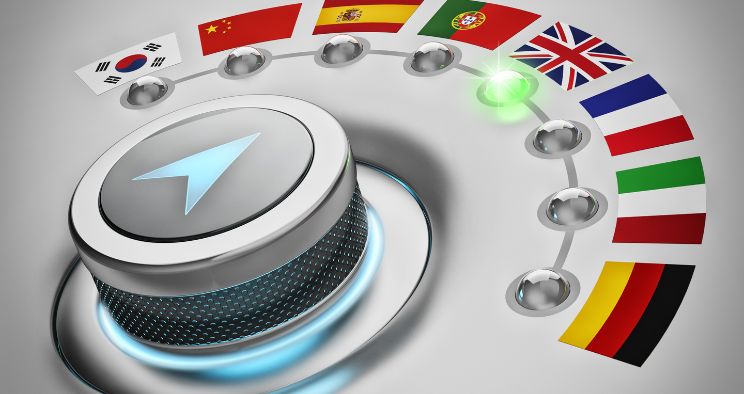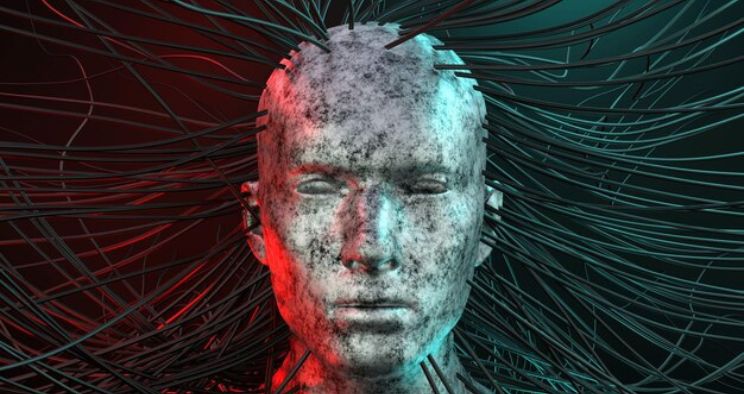AI hallucinations are like unexpected and kind of quirky mistakes that artificial intelligence systems can make. Imagine you tell a smart computer to do something, but instead of doing exactly what you asked, it might come up with something a bit strange or not quite right.
This happens because AI systems, which learn from data, can sometimes misinterpret information and give you results that are a bit like a computer having its own quirky ideas. It’s a reminder that while AI is super smart, it’s not always perfect and can have moments of surprising behavior.
In this article, we will explore the fascinating world of AI-generated hallucinations and delve into 29 mind-blowing examples that bridge the gap between science fiction and reality.
Types of Hallucinations – Auditory, Visual, Tactile, and More
- Auditory Hallucinations: These involve hearing sounds or voices that are not actually present. Auditory hallucinations are often associated with mental health conditions like schizophrenia, where individuals may hear voices conversing or commenting on their thoughts or actions.
- Visual Hallucinations: Visual hallucinations involve seeing things that are not real. People experiencing visual hallucinations may perceive objects, people, or scenes that are not actually there. These hallucinations can be vivid and detailed, making it difficult for individuals to distinguish between reality and their hallucinatory perceptions.
- Tactile Hallucinations: Tactile hallucinations involve false sensations on the skin or internal organs. Individuals may feel as though they are being touched, poked, or experience sensations like crawling insects on their skin, even when no external stimuli are present.
- Olfactory Hallucinations: Olfactory hallucinations involve smelling odors or scents that are not present in the environment. These hallucinations can range from pleasant aromas to unpleasant or noxious smells.
- Gustatory Hallucinations: Gustatory hallucinations involve experiencing taste sensations that are not actually present. Individuals may perceive flavors or tastes without any external stimuli.
Examples of AI Hallucinations
AI hallucinations, also known as artificial hallucinations, are false or misleading responses generated by AI systems that present themselves as factual information. These hallucinations have become a significant problem with the rise of large language models like ChatGPT. Users have complained that these bots frequently produce random falsehoods that sound plausible. In this blog, we will explore 29 examples of AI hallucinations and their impact on various industries.
1. Chatbots providing incorrect answers
Chatbots are AI systems designed to engage in conversations with users. Sometimes, due to incorrect programming or limited knowledge, chatbots may provide inaccurate or nonsensical responses, leading to a hallucination-like experience for the user.
2. AI translators producing inaccurate translations
AI-powered translation services rely on complex algorithms to convert text from one language to another. However, they may occasionally produce mistranslations or misinterpret the context, resulting in hallucination-like translations that don’t accurately convey the intended meaning.
3. AI-generated medical diagnoses misidentifying critical conditions
AI systems can assist in medical diagnoses by analyzing symptoms and suggesting potential conditions. However, if the algorithm is flawed or lacks sufficient data, it may generate incorrect diagnoses, potentially leading to hallucination-like situations where critical conditions are misidentified or overlooked.
4. Image recognition algorithms misclassifying objects
AI algorithms used in image recognition tasks can sometimes misclassify objects in images due to various factors like poor training data or complex visual patterns. This could lead to hallucination-like experiences where objects are incorrectly identified or labeled.
Must Read: 24 Best Examples of artificial intelligence in business
5. Speech recognition software misinterpreting spoken words
Speech recognition systems, such as voice assistants, rely on AI to convert spoken words into text. However, they can occasionally misinterpret words or phrases, leading to hallucination-like situations where the software generates incorrect transcriptions.
6. AI-generated artwork with surreal or nonsensical elements
AI-powered creative platforms can generate artwork based on various inputs. Sometimes, the generated pieces may contain surreal or nonsensical elements, giving rise to hallucination-like visuals that defy conventional logic or reality.
7. AI-generated music with dissonant or eerie tones
AI algorithms can compose music based on existing compositions or user preferences. However, in some cases, the generated music may have dissonant or eerie tones, creating an auditory hallucination-like experience that deviates from conventional musical expectations.
8. AI-generated storylines with nonsensical or illogical plots
AI systems can generate stories or narratives based on given prompts or data. However, due to limitations in understanding context or logical coherence, the generated storylines may have nonsensical or illogical plots, resembling hallucination-like narratives.
9. AI-generated virtual reality environments with distorted or bizarre elements
AI can be used to generate virtual reality (VR) environments. Sometimes, these environments may include distorted or bizarre elements that deviate from realistic representations, creating a hallucination-like experience for the VR user.
10. AI-generated video game characters exhibiting strange behaviors
AI algorithms used to create non-player characters (NPCs) in video games can occasionally produce characters with strange or unpredictable behaviors, giving players a hallucination-like perception of interacting with entities that don’t adhere to expected norms.
11. AI-generated product recommendations that seem unrelated or irrelevant
AI-powered recommendation systems analyze user data to provide personalized suggestions. However, they may occasionally generate recommendations that seem unrelated or irrelevant to the user’s preferences, creating a hallucination-like impression of the AI not understanding their needs.
12. AI-generated news articles with fabricated or misleading information
AI algorithms can generate news articles based on available data. In some cases, these articles may contain fabricated or misleading information, leading to hallucination-like situations where readers are exposed to false or distorted narratives.
13. AI-powered virtual assistants misunderstand user commands
Virtual assistants like Siri or Alexa rely on AI to interpret user commands and perform tasks. However, they can sometimes misunderstand or misinterpret instructions, resulting in hallucination-like situations where the AI fails to execute the desired actions.
14. AI-generated poetry with nonsensical or unconventional language
AI algorithms can generate poetry by analyzing existing works or using creative algorithms. However, the generated poetry may occasionally contain nonsensical or unconventional language, creating a hallucination-like experience where the meaning is elusive or distorted.
15. AI-generated video captions with inaccurate transcriptions
AI algorithms used to generate video captions may occasionally produce inaccurate transcriptions, especially for videos with complex audio or unclear speech. This can lead to hallucination-like experiences where the captions don’t align with the actual content.
16. AI-generated social media posts with bizarre or illogical content
AI systems can generate social media posts based on user preferences or predefined patterns. However, the generated posts may sometimes have bizarre or illogical content, resembling hallucination-like updates that deviate from expected social media norms.
17. AI-powered recommendation systems suggesting conflicting options
Recommendation algorithms can suggest multiple options to users based on their preferences. However, if the AI system is flawed or lacks accurate data, it may occasionally suggest conflicting options, resulting in a hallucination-like experience where the recommendations contradict each other.
18. AI-generated scientific research papers with flawed conclusions
AI algorithms can assist in scientific research by analyzing vast amounts of data. However, if the algorithm misinterprets or misanalyzes the information, it may generate research papers with flawed conclusions, leading to hallucination-like scientific findings.
19. AI-generated weather forecasts with inaccurate predictions
AI systems analyze various data sources to generate weather forecasts. However, if the algorithm fails to consider certain factors or lacks accurate input, it may produce inaccurate predictions, creating a hallucination-like situation where the forecast doesn’t align with the actual weather conditions.
20. AI-generated investment advice with unreliable recommendations
AI-powered investment platforms analyze market data to generate investment advice. However, if the algorithm is flawed or lacks accurate historical data, it may provide unreliable recommendations, leading to hallucination-like situations where the advice fails to produce expected outcomes.
21. AI-generated movie or TV show recommendations with mismatched genres
AI algorithms used in recommendation systems for movies or TV shows may occasionally suggest options with mismatched genres or unrelated themes, resulting in a hallucination-like experience where the recommendations don’t align with the user’s preferences.
22. AI-generated restaurant recommendations with inconsistent reviews
AI-powered restaurant recommendation platforms analyze user reviews and preferences to suggest dining options. However, if the algorithm fails to filter out inconsistent or biased reviews, it may generate recommendations with conflicting opinions, creating a hallucination-like impression of the restaurant’s quality.
23. AI-generated fashion recommendations with mismatched styles
AI algorithms used in fashion recommendation systems may occasionally suggest clothing items with mismatched styles or conflicting fashion trends, leading to a hallucination-like situation where the recommendations don’t align with the user’s fashion preferences.
24. AI-generated language translations with nonsensical phrases
AI-powered language translation systems can sometimes generate translations that include nonsensical phrases or incorrect grammar, resulting in hallucination-like text that deviates from the intended meaning of the original content.

25. AI-generated video editing with unnatural or jarring transitions
AI algorithms used in video editing software can automate certain editing tasks. However, if the algorithm fails to understand the desired aesthetics or transitions, it may produce videos with unnatural or jarring visual effects, creating a hallucination-like viewing experience.
26. AI-generated voice synthesis with unnatural or robotic tones
AI-powered voice synthesis systems can convert text into speech. However, if the algorithm doesn’t consider natural intonations or lacks sufficient training data, it may produce voices with unnatural or robotic tones, resembling a hallucination-like auditory experience.
27. AI-generated financial reports with misleading data
AI algorithms can analyze financial data to generate reports. However, if the algorithm misinterprets or misrepresents the data, it may produce financial reports with misleading information, leading to hallucination-like situations where the analysis doesn’t reflect the true state of the finances.
28. AI-generated travel recommendations with incorrect directions
AI-powered travel recommendation systems can suggest routes and directions to users. However, if the algorithm fails to consider accurate mapping data or real-time conditions, it may provide incorrect directions, creating a hallucination-like experience where the recommended route doesn’t match the actual path.
29. AI-generated educational content with factual errors
AI systems can generate educational content based on available resources. However, if the algorithm doesn’t have access to accurate or up-to-date information, it may produce educational materials with factual errors, leading to hallucination-like situations where the content misrepresents the subject matter.

